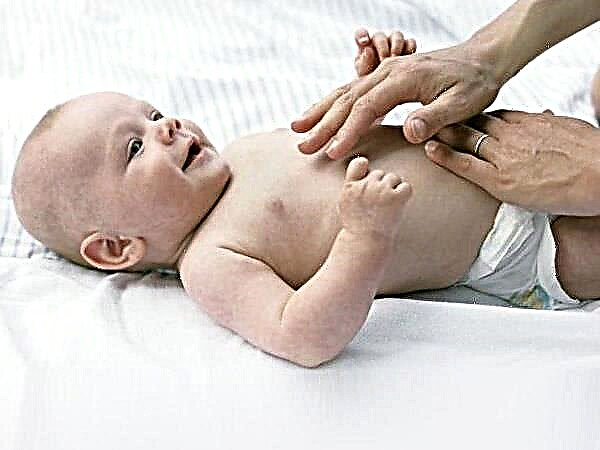
The term "chalazion" comes from the Greek language and literally translates as "hailstone". It is understood as a pathological enlargement of the meibomian gland. The clinical picture, especially in the first stages of development, of the pathological process is very similar to that of another ophthalmic disease - barley. The treatment of this disease can be very long and it often happens that conservative methods of therapy are not so successful.
What should be the actions of parents when the first symptoms of chalazion appear in a child, what is the secret of successful treatment and how to avoid relapses, we will tell in this article.
What it is?
In the thickness of the cartilage of the upper and lower eyelids in humans there are specific sebaceous glands with a branched system of ducts, which are called meibomian. Their more precise localization is the inner part of the eyelid skin next to the ciliary edge. The ducts of the meibomian glands open in the growth zone of the eyelashes. On average, each person has about 35-50 such glands in the upper eyelid and 20-30 in the lower.

The meibomian glands produce a special secret, which is one of the structural components of the tear film that moisturizes the eye. The secret is also needed to lubricate the cornea and moisturize the edges of the eyelids. He plays the role of a kind amartizator in the mechanism of contact of the edges of the eyelids with the surface of the eyes. Also, the fatty secretion of the meibomian gland regulates the level of moisture in the eye with the tear fluid, preventing its excessive evaporation.
When the meibomian gland becomes inflamed, a blockage of its excretory ducts occurs, which inevitably leads to a disruption of the normal outflow of fatty secretions. Gradually, it begins to accumulate inside the gland, which causes its gradual increase. The area of secretion accumulation turns into a rounded seal, separated from the adjacent tissues by a connective tissue capsule.
In the course of numerous studies, it was found that the chalazion consists of granulation tissue, as well as many epithelioid and giant cells. If a pathogenic pathogen gets there, then can develop purulent inflammatory process, which will result in the formation of an abscess (purulent exudate isolated from nearby tissues by a dense connective tissue capsule). In this case, pronounced signs of inflammation will appear in the zone of formation of the chalazion: swelling and redness of the skin, pain.
Sometimes it happens that the chalazion breaks through itself without outside interference. In its place, a fistula can form, which is a channel connecting the chalazion capsule and the surface of the eyelid skin. Granulations (areas of tissue growth) appear near the cutaneous opening of the fistula. The skin in this area becomes inflamed and very sensitive.


The development of the disease can be quite long and has a recurrent nature (the reappearance of such a seal), in this case, conservative treatment can be long and not give the desired result.
Then the only effective method to help get rid of the chalazion is surgical removal. But despite this, in the early stages of treatment, most ophthalmologists prefer drug therapy for the disease, considering the surgical method as an extreme measure, especially if the patient is a child.


Treatment features
In the medical environment, there is a strong belief that the formation of chalazion occurs under the influence of the same pathogenic microflora as barley. It follows from this that the therapy of the disease should primarily be aimed at destruction of the pathogen. However, in any case, the ophthalmologist determines the tactics of treatment after examining the child. It is highly undesirable to self-medicate, since only a specialist can differentiate the disease among other ophthalmic pathologies and prescribe adequate therapy.
With a weak severity of symptoms and a sluggish pathological process, conservative methods of treatment help children, but the course of therapy in such cases can be quite long.
In cases of acute manifestation of clinical signs of chalazion, its surgical removal can be applied.


Antibiotic therapy involves the use disinfecting eye drops or ointments, among which "Tobrex", yellow mercury and hydrocortisone ointment, as well as Vishnevsky's ointment, etc. With prolonged treatment, the ophthalmologist may prescribe the introduction of medicinal injections directly into the chalazion cavity. This technique is quite effective, but children are prescribed it with caution, since this procedure is accompanied by a number of side effects.
Eye drops "Tobrex" have a wide spectrum of action. They belong to the pharmacological group of aminoglycosides. The main active substance of the drug is tobramycin, it is able to fight streptococcal and staphylococcal infections, E. coli and Pseudomonas aeruginosa, enterobacter and Klebsiella. However, the drops do not show activity when interacting with group B streptococcus. Additional components of the drug: sodium chloride, boric acid, purified water.


"Tobrex" is very effective in the treatment of chalazion, as well as other inflammatory eye diseases such as keratitis (inflammation of the cornea), conjunctivitis (inflammation of the conjunctiva - the mucous membrane of the eye), blepharitis (inflammation of the eyelid), etc. Also drops are prescribed as a disinfectant in the postoperative period. The course of treatment for children should not exceed a week. In the acute phase of the disease, the drug is instilled at least 3-4 times a day. Contraindications: hypersensitivity to one of the components of the drug.
The eye instillation regimen prescribed by your doctor should be followed exactly. You cannot arbitrarily increase the number of instillations per day or use the drug longer than the prescribed course of treatment. During treatment with this remedy wearing contact lenses is possible.


Eye drops Floxal are able to have an effective effect in the fight against pathogenic microflora, represented by obligate and facultative anaerobes, as well as aerophiles and chlamydia. Ofloxacin acts as the main active substance of the drug. The use of "Floxal" is advisable in the treatment of infectious diseases such as chalazion, keratitis, conjunctivitis, blepharitis, barley, corneal ulcer, etc. The course of treatment with the drug is no more than two weeks. Contraindications: hypersensitivity to one of the components of the drug.
You can not start using "Floxal" without the appointment of an ophthalmologist. During the course of treatment with the drug, contact lenses should not be worn.
Eye drops "Tsipromed" have antiseptic and anti-inflammatory effects. The drug shows high efficiency in the fight against gram-positive and gram-negative pathogenic microflora. Cypromed belongs to the group of fluoroquinolones.


Ophthalmologists recommend using Tsipromed for the treatment of the following inflammatory diseases: chalazion, conjunctivitis, uveitis, keratitis, blepharitis, dacryoscystitis, etc. The course of drug treatment should not exceed two weeks. Contraindications: hypersensitivity to one of the components of the drug. "Tsipromed" is not prescribed for the treatment of chalazion for children under one year old.
You do not need to try at home without consulting an ophthalmologist to treat chalazion with folk remedies (for example, various decoctions and lotions using calendula, chamomile, aloe juice, etc.) and other dubious alternative methods (homeopathy, various conspiracies, etc.) ...


Children's doctor Komarovsky, well-known in our country, whose opinion is authoritative not only for many Russian parents, but also for most pediatricians, insists that in the event of a chalazion in a child you must first resort to standard methods of traditional medicine, and not to "grandmother's" recipes, which not only do not help to get rid of the chalazion, but can also be dangerous to the health of the child (especially when it comes to treating the baby).
Symptoms
The main sign of the development of this disease is the formation of swelling in the region of the edge of the eyelid, closer to the eyelash growth line. In the future, an elastic seal with smooth edges appears in its place, resembling a pea in shape. Redness is observed on the inner surface of the eyelid.

Chalazion rarely causes pain in the eyelid area. If an infection joins such a pathological process, then all signs of an acute inflammatory process will additionally appear: pain, swelling, redness, and possibly spontaneous opening of purulent exudate from the inner edge of the eyelid. In such cases, treatment includes antibacterial and anti-inflammatory therapy, and also application physiotherapy procedures.
Chalazion at the initial examination resembles barley in many ways. They differ in that barley, after the "breakthrough" of pus outward, usually resolves and all symptoms gradually disappear. Chalazion, in turn, rarely breaks through, gradually gains in size and becomes quite dense.
Blockage of the meibomian gland can occur in one or two eyelids at once.


If a child with chalazion is not provided with the necessary treatment for a long time, the seal can grow to those limits when, by putting pressure on neighboring tissues, it can provoke the development of other diseases of the visual apparatus. therefore you shouldn't delay going to an ophthalmologisteven if the painless eyelid seal does not give your child any discomfort. Remember that conservative treatment of chalazion is appropriate only in the initial stages of the development of the disease or after it has broken through.
When the accumulated secret of the meibomian gland has become denser, only surgical intervention can eliminate the problem, which, psychologically, is not so difficult for children as for their frightened parents.
In children, cases of recurrent multiple chalazions are not often recorded. Usually, the chalazion can reappear in the same place where it was previously removed. This is due to the fact that the tumor was not completely removed during the operation.


There is a theory that suggests that the presence of hyperopia (farsightedness) in a child contributes to the development of chalazion. In any case, this type of refractive error requires spectacle or contact correction, as well as other methods of treatment (apparatus therapy, visual gymnastics, physiotherapy procedures, etc.).
The appearance of a chalazion can occur against the background of a decrease in immunity... This can also be explained by hereditary or acquired instability of the immune system to gram-positive microflora. In this case, a treatment plan should be drawn up with the participation of an immunologist. Chalazion may appear as a result of an anatomical defect, which is manifested by a too narrow lumen of the meibomian glands, as a result of which the normal outflow of fat secretion is disrupted.


Another reason for the periodic blockage of the ducts of the meibomian glands is weak functional activity of the muscular apparatus, affecting the movement of secretions in a certain direction, as well as a low content of the protective protein of the secretory tear immunoglobulin. In such cases, the child usually has multiple chalazions periodically.
A special eyelid massage can minimize the risk of chalazion, but the child will still need a consultation from narrow specialists.
Operative intervention
The ophthalmologist decides whether surgery is necessary. At the same time, he should proceed from how long the course of drug treatment lasts and what is the positive dynamics of recovery. If the "pea" does not pass and does not decrease for a very long period, then most likely the doctor will suggest its surgical removal.


The operation takes place under local anesthesia. If the patient is under 2 years old, then the manipulation will be performed under general anesthesia.
The whole procedure can be roughly divided into several stages:
- Introduction of an anesthetic into the eyelid cavity;
- After the onset of local loss of sensitivity, the seal is fixed at the base with a clamp;
- An incision is made on the inside of the eyelid through which the capsule is removed;
- Sutures are applied to the incision;
- The eyelid is treated with antiseptic agents;
- Finally, an aseptic bandage is applied to the eye.


In the postoperative period, the patient needs to wear a slightly pressure bandage for some time. You need to remove it only before placing a medicinal ointment under the eyelid.
In addition to surgical removal of the seal from the thickness of the eyelid with a scalpel, there is a method for removing chalazion with a laser. This technique has some advantages over the usual eyelid surgery, among them the main thing is the absence of the need to suture after the completion of the manipulation, as well as the fact that the operation is absolutely bloodless. Naturally, this significantly shortens the period of complete recovery after surgery, and after this procedure, you do not need to wear a bandage for a long time. Parents' feedback on this method is mostly positive.

In the case when a scar remains after the operation, which, with regular contact with the surface of the cornea, creates a risk of damage to it, it is necessary to wear special lenses to prevent intense friction until the surgical wound is completely healed.
For information on how to treat chalazion in children, see the next video.



